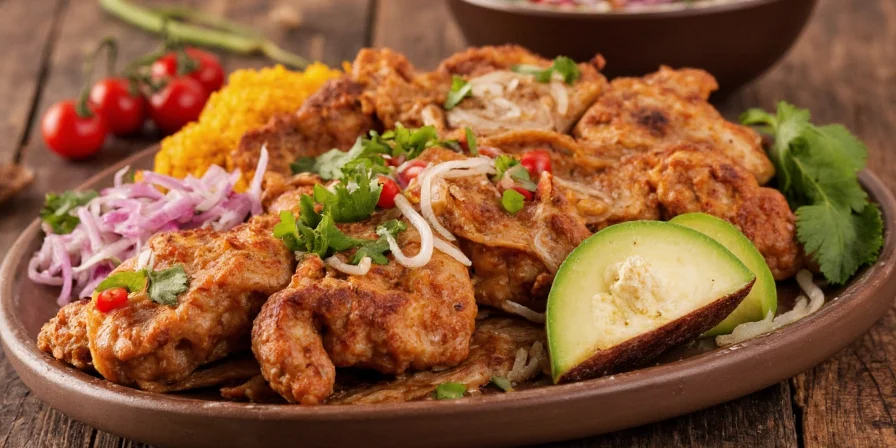Exploring the Rich Tapestry of South American Food
South American cuisine is a vibrant fusion of indigenous traditions, colonial influences, and the diverse cultures that have inhabited the continent over centuries. From the Andean highlands to the tropical rainforests, the culinary landscape is as varied as the geography itself. In this blog, we will delve into the unique flavors, ingredients, and cooking techniques that characterize South American food, celebrating its role in the Global Spice Traditions.
The Diversity of South American Cuisine
South America is home to 12 countries, each with its distinct culinary identity. To appreciate the richness of South American food, we must explore the regional variations that define it.
- Andean Cuisine: This includes countries like Peru, Bolivia, and Ecuador, where high-altitude ingredients such as quinoa, potatoes, and corn are staples.
- Amazonian Cuisine: In the Amazon basin, indigenous peoples utilize the forest's bounty, including fish, tropical fruits, and unique herbs.
- Southern Cone Cuisine: Countries like Argentina, Chile, and Uruguay are known for their asados (barbecues) and rich beef dishes.
- Caribbean Influence: Northern countries like Colombia and Venezuela feature Caribbean flavors, with an emphasis on seafood and tropical fruits.
Key Ingredients
South American food is characterized by an array of ingredients that reflect the continent's biodiversity. Here are some essential components:
| Ingredient | Description |
|---|---|
| Quinoa | A nutrient-rich grain native to the Andes, often used in salads and side dishes. |
| Aji Pepper | A staple in many South American dishes, these peppers can range from mild to hot and are integral to sauces and marinades. |
| Chicha | A traditional fermented beverage made from corn, enjoyed in various forms across the continent. |
| Empanadas | Stuffed pastries that vary by region, often filled with meat, cheese, or vegetables. |
| Yuca | A starchy root vegetable used in many dishes, especially in Brazil and the Caribbean. |
Regional Highlights
Peruvian Cuisine
Peruvian food has gained international acclaim for its bold flavors and innovative techniques. The capital city, Lima, is often referred to as the gastronomic capital of South America. Key dishes include:
- Ceviche: Fresh fish marinated in citrus juices, often served with onions, cilantro, and sweet potatoes.
- Ají de Gallina: A creamy chicken dish made with ají amarillo (yellow chili pepper) and walnuts.
- Pollo a la Brasa: Rotisserie chicken marinated in a blend of spices, served with fries and aji sauce.

Brazilian Cuisine
Brazil's culinary landscape is influenced by its indigenous peoples, Portuguese colonizers, and African slaves. Notable dishes include:
- Feijoada: A hearty black bean stew with various cuts of pork, typically served with rice and orange slices.
- Moqueca: A seafood stew made with coconut milk, tomatoes, and peppers.
- Brigadeiro: A popular chocolate dessert made with condensed milk and cocoa.

Argentinian Cuisine
Argentina is renowned for its beef production, and asado (barbecue) is a cherished tradition. Key components include:
- Asado: A social gathering centered around grilling various cuts of meat, often served with chimichurri sauce.
- Empanadas: Stuffed pastries that vary by region, typically filled with beef, chicken, or vegetables.
- Dulce de Leche: A sweet caramel-like sauce used in desserts and pastries.

Cooking Techniques
Cooking in South America often involves traditional techniques that enhance the flavors of local ingredients:
- Grilling (Asado): A method central to Argentine cuisine, where meats are cooked over an open flame.
- Stewing: Many dishes, like feijoada, are slow-cooked to develop rich flavors.
- Fermentation: Used in making chicha, a fermented beverage that highlights indigenous practices.
- Roasting: Common for vegetables and meats, especially in the Andean region.
Spices and Seasonings
Spices play a crucial role in South American cuisine, providing depth and complexity to dishes. Here are some commonly used spices:
- Aji Amarillo: A yellow chili pepper that adds a sweet, fruity heat.
- Smoked Paprika: Common in Brazilian dishes, contributing a rich color and flavor.
- Cumin: Often used in stews and grilled meats.
- Oregano: Frequently used in marinades and sauces across the continent.
South American Food and Its Global Influence
As globalization continues to shape culinary trends, South American food has gained popularity worldwide. Chefs and home cooks alike are drawn to its vibrant flavors and diverse ingredients. Fusion cuisine, which combines South American elements with other culinary traditions, is on the rise. For instance:
- Peruvian-Japanese Nikkei Cuisine: Combining fresh seafood with Japanese techniques and flavors.
- South American Tacos: Incorporating traditional fillings like carne asada or grilled vegetables into Mexican taco formats.
- Chilean Merquén: A smoked chili pepper blend that is being used in various international dishes.
Conclusion
South American food is a testament to the continent's rich cultural heritage and diversity. With its unique ingredients, traditional cooking methods, and bold flavors, it reflects the stories of the people who have shaped it over centuries. As we continue to explore and celebrate Global Spice Traditions, South American cuisine stands out as a vibrant and flavorful chapter in the culinary world.










 浙公网安备
33010002000092号
浙公网安备
33010002000092号 浙B2-20120091-4
浙B2-20120091-4